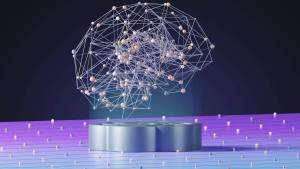In the fast-paced world of technology, artificial intelligence (AI) continues to revolutionize various industries. One such company at the forefront of this AI revolution is DeepAI. DeepAI offers a suite of AI tools designed specifically for creative individuals, providing them with powerful solutions for image generation, image editing, and interactive conversations with AI characters. In this comprehensive guide, we will delve into the key features, pricing, reviews, alternatives, and use cases of DeepAI, helping you determine if it’s the right tool for your creative needs.
How Much Does DeepAI Cost?
DeepAI offers a subscription-based pricing model. Their monthly plan, DeepAI PRO, is priced at $4.99 per month. Additionally, they offer a pay-as-you-go option, starting at $5 for 100 AI Generator Calls. For more detailed pricing information, visit their pricing page.
Reviews of DeepAI

DeepAI has garnered positive feedback from users, particularly researchers and developers. Its collection of AI/ML publications and recent addition of creativity tools, such as image generators, have been well-received by the community. On Product Hunt, DeepAI has received an average rating of 3 out of 5 stars. To read reviews and gain more insights about DeepAI, visit their page on Product Hunt.
Use Cases For DeepAI
DeepAI offers a range of use cases that cater to the needs of creative individuals. Let’s explore each use case in detail:
AI Image Generator
The AI Image Generator tool by DeepAI allows users to generate images by entering a prompt and selecting an art style. This feature enables users to create unique visuals effortlessly. With DeepAI’s AI Image Generator, you can bring your creative ideas to life in a matter of seconds.
AI Image Editor
DeepAI’s AI Image Editor simplifies the process of image editing. By entering a simple prompt, users can quickly edit images without requiring advanced editing skills. Whether you need to enhance the colors, adjust the brightness, or add artistic effects, DeepAI’s AI Image Editor has got you covered.
AI Characters
Engage in interactive conversations with AI characters from various categories, including historical figures, celebrities, and TV show characters. DeepAI’s AI Characters feature allows you to have dynamic and immersive conversations, providing an excellent resource for writers, game developers, and storytellers.
For more information on these use cases and to explore DeepAI’s capabilities, visit their official website.
Alternatives to DeepAI

While DeepAI offers a range of powerful AI tools, it’s always good to explore alternatives to find the one that best suits your needs. Here are four notable alternatives to DeepAI:
WordAi
WordAi is an AI text generator tool that focuses on rewriting and paraphrasing content. It simplifies the process of creating unique text for various purposes, making it a valuable tool for content creators and writers.
Quillbot
Quillbot is a paraphrasing tool that helps users rewrite sentences and paragraphs while maintaining the original meaning. It’s an excellent tool for improving the quality of your writing and ensuring it is free from plagiarism.
SE Ranking
SE Ranking is a comprehensive platform that offers AI-powered content generation and optimization. It assists users in creating SEO-friendly content for their websites and marketing materials, helping them boost their online presence.
GPT-4
Developed by OpenAI, GPT-4 is a powerful language model that can generate human-like text based on prompts. It is widely used for content creation, editing, and a wide range of applications. GPT-4 is known for its ability to generate highly coherent and contextually relevant text.
By exploring these alternatives, you can find the AI tool that aligns best with your creative goals and requirements.
The Evolution of AI in Creative Industries

The integration of artificial intelligence into creative industries marks a significant shift in how content is created, edited, and imagined. This evolution has opened up new possibilities for creators across various fields, from digital art and design to writing and entertainment. DeepAI stands at the forefront of this revolution, offering tools that harness the power of AI to enhance creative processes.
Artificial intelligence is transforming the creative landscape by automating routine tasks, generating new ideas, and providing insights that were previously unattainable. For instance, AI image generators can create visuals from textual descriptions, allowing artists to explore new concepts without the constraints of traditional mediums. Similarly, AI-driven text generators can assist writers in overcoming writer’s block, generating story ideas, or refining their prose.
Impact on Creativity and Productivity
The impact of AI on creativity and productivity cannot be overstated. By automating certain aspects of the creative process, AI tools like those offered by DeepAI enable individuals to focus on the more innovative and subjective elements of their work. This synergy between human creativity and machine efficiency is creating a new paradigm in which ideas can be brought to life faster and with more precision.
Ethical Considerations and the Future of AI in Creativity
As AI continues to evolve and become more integrated into creative endeavors, ethical considerations come to the forefront. Issues such as copyright, originality, and the role of AI in the creative process are increasingly relevant. Navigating these challenges requires a thoughtful approach, ensuring that AI serves as a tool for enhancing human creativity rather than replacing it.
The future of AI in creative industries looks promising, with advancements in technology offering even more sophisticated tools for creators. The potential for AI to understand and replicate complex creative patterns means that the possibilities for innovation are limitless. However, the key to harnessing this potential lies in collaboration between AI developers and creative professionals, ensuring that the tools developed meet the nuanced needs of creators.
DeepAI: A Catalyst for Creative Innovation
DeepAI exemplifies the potential of AI to act as a catalyst for creative innovation. By providing a suite of tools designed specifically for creative tasks, DeepAI empowers users to push the boundaries of what’s possible in art, writing, and digital content creation. Whether it’s through generating unique images, editing photos with ease, or engaging in interactive conversations with AI characters, DeepAI offers a glimpse into the future of creativity.
In wrapping up, DeepAI and similar AI tools are reshaping the creative industries by offering novel solutions to age-old challenges. They not only enhance the efficiency and scope of creative work but also raise important questions about the future of creativity in an AI-driven world. As we move forward, the collaboration between human intuition and AI’s capabilities will undoubtedly lead to a new era of innovation, transforming our approach to creativity and its possibilities.
Bridging the Gap Between AI and Human Creativity
As we delve deeper into the era of digital transformation, the relationship between artificial intelligence and human creativity becomes increasingly synergistic. This fusion is not about replacing human creativity with machines but rather about amplifying and extending the creative capabilities of individuals. In this context, platforms like DeepAI serve as bridges, connecting the raw potential of AI with the nuanced, imaginative power of the human mind.
Collaborative Creativity
One of the most exciting developments in the integration of AI into creative processes is the concept of collaborative creativity. This approach sees artists, writers, and creators of all kinds using AI as a partner in the creative process. AI can suggest variations, simulate outcomes, and even inspire new directions for creative projects. For example, an artist might use DeepAI’s image generation tools to explore visual ideas that they hadn’t considered, pushing their work into uncharted territories.
Customization and Personalization
Another significant advantage of AI in creativity is its ability to customize and personalize creative outputs. AI algorithms can analyze vast amounts of data to identify patterns and preferences, enabling creators to tailor their work to specific audiences or individuals. This level of customization was previously difficult and time-consuming but is now accessible with a few clicks through platforms like DeepAI.
Expanding the Creative Toolbox
AI tools are rapidly expanding the creative toolbox available to creators. From generating realistic images and composing music to drafting scripts and creating virtual worlds, AI is unlocking new forms of expression and storytelling. This expansion is not just about novelty; it’s about giving creators the freedom to experiment and express themselves in ways that were previously impossible or impractical.
Education and Skill Development
The accessibility of AI-powered tools like DeepAI is also democratizing creativity, making advanced techniques and processes available to a wider audience. This democratization has significant implications for education and skill development. Aspiring artists, designers, and writers can use these tools to learn, experiment, and hone their skills, potentially leveling the playing field and fostering a new generation of creative talent.
The Future of Creative Collaboration
Looking ahead, the future of creative collaboration between humans and AI appears rich with potential. As AI technology continues to evolve, we can expect even more intuitive and powerful tools that understand and anticipate the needs of creators. This evolution will likely lead to a more seamless integration of AI into the creative process, where the line between tool and collaborator becomes increasingly blurred.
In summary, the intersection of AI and human creativity is a space brimming with possibilities. By leveraging platforms like DeepAI, creators can enhance their creative processes, explore new forms of expression, and engage with their work in innovative ways. The journey ahead is one of discovery, where the combined strengths of human imagination and artificial intelligence pave the way for a new era of creativity. As we embrace these advancements, the potential for transformative, boundary-pushing work is limitless.
Ethical Considerations in the Use of AI for Creative Endeavors
As artificial intelligence becomes increasingly embedded in the creative landscape, ethical considerations emerge as a critical area of focus. The use of AI tools like DeepAI in creative processes brings to light questions about originality, authenticity, and the implications for copyright and intellectual property. This section explores the ethical dimensions of employing AI in creative work, offering insights into how creators can navigate these challenges responsibly.
Originality and Authenticity
One of the primary ethical concerns revolves around the issues of originality and authenticity in AI-generated content. As AI tools become more sophisticated, distinguishing between human-created and AI-generated work becomes more challenging. This blurring of lines raises questions about the value we place on human creativity and the meaning of originality in the digital age.
- Maintaining Human Influence: Ensuring that human intention and creativity remain at the core of the creative process is crucial. Creators can use AI as a tool to enhance their work, but maintaining a human element in the conception and decision-making phases preserves the authenticity of the creative output.
- Transparency: Being transparent about the use of AI in the creative process helps maintain trust with audiences. Creators can acknowledge the role of AI in their work, offering clarity on how it was used to complement their creative vision.
Copyright and Intellectual Property
The integration of AI in creative work also brings up concerns regarding copyright and intellectual property rights. Determining ownership of AI-generated content can be complex, especially when such content is derived from vast datasets that include copyrighted material.
- Clear Guidelines and Policies: Establishing clear guidelines and policies around the use of AI-generated content is essential. This includes understanding the legal implications of using AI tools and ensuring that any content created adheres to copyright laws.
- Ethical Use of Data: Creators and AI tool developers must be mindful of the data used to train AI models. Ensuring that the data does not infringe on copyright or privacy rights is key to ethical AI use in creative fields.
Implications for the Creative Industry
The rise of AI in creative industries also prompts reflection on the broader implications for artists, writers, and creators. While AI offers new opportunities for innovation and expression, there is also concern about the impact on job opportunities and the valuation of human-created art.
- Complementary Roles: Viewing AI as a complement rather than a replacement for human creativity can mitigate some of these concerns. AI can take on repetitive or time-consuming tasks, allowing creators to focus on aspects of their work that require human insight and emotional depth.
- Supporting Creativity: Emphasizing the role of AI in supporting and enhancing human creativity, rather than competing with it, can help ensure that the advancement of AI tools benefits the creative community as a whole.
In navigating the ethical considerations of using AI in creative endeavors, a balanced approach that respects copyright laws, values originality, and prioritizes human creativity is essential. By addressing these ethical challenges head-on, creators and AI tool developers can foster an environment where AI serves as a powerful ally in the creative process, enhancing the richness and diversity of artistic expression in the digital age.
Future Trends: The Convergence of AI and Creativity
As we look toward the future, the convergence of artificial intelligence and creativity is set to redefine the boundaries of what’s possible in art, design, writing, and beyond. This evolving partnership promises to unlock unprecedented opportunities for innovation and expression. This section explores the emerging trends at the intersection of AI and creativity, highlighting the potential impacts and opportunities for creators and the industry at large.
Enhanced Collaborative Tools
Future AI tools will likely offer even more sophisticated collaborative features, enabling a deeper partnership between humans and machines. These tools will not only understand the technical aspects of creative tasks but also grasp the nuances of style, emotion, and cultural context. This evolution will make AI an even more integral part of the creative process, acting as a true creative partner that can offer suggestions, generate ideas, and even predict future trends.
Democratization of Creativity
AI has the potential to democratize creativity by making advanced tools and techniques accessible to a wider audience. Individuals without formal training in art or writing could use AI to bring their visions to life, lowering barriers to entry and fostering a more inclusive creative landscape. This democratization could lead to a surge in creative output and diversity, enriching the cultural fabric with new perspectives and voices.
Exploring New Forms of Expression
The future will likely see the emergence of entirely new forms of creative expression, born from the unique capabilities of AI. From interactive and immersive art installations to dynamic storytelling experiences that adapt to the audience, AI will enable creators to experiment with formats and mediums that were previously unimaginable. These innovations will challenge our conceptions of art and entertainment, pushing the boundaries of audience engagement.
Ethical and Responsible Use of AI
As AI becomes more ingrained in creative practices, the importance of ethical and responsible use will become even more pronounced. Future trends will need to address concerns about data privacy, copyright, and the impact of AI on cultural and social norms. Developing ethical guidelines and best practices for AI in creativity will be crucial to ensure that this convergence benefits society as a whole.
AI as a Catalyst for Human Creativity
Rather than replacing human creativity, AI is poised to act as a catalyst, inspiring humans to explore new horizons and express themselves in innovative ways. The interaction between human intuition and AI’s analytical capabilities will spawn a new era of creativity, characterized by a fusion of emotional depth and computational precision.
Conclusion
DeepAI is a leading provider of AI tools for creative individuals. With its AI image generation, image editing, and AI character conversation features, DeepAI empowers users to bring their creative ideas to life. The platform has received positive feedback from the community, and its pricing options cater to different needs and budgets. However, if DeepAI doesn’t meet your specific requirements, there are alternative tools like WordAi, Quillbot, SE Ranking, and GPT-3 that offer similar functionalities. Remember to explore these options and choose the AI tool that best suits your creative goals. With the right AI tool at your disposal, you can unlock new possibilities and take your creativity to the next level.
FAQ: DeepAI and AI Image Generators
Can I use DeepAI for free?
Yes, DeepAI offers some services that can be used for free, typically with certain limitations or usage quotas. To access more extensive features or higher usage limits, you may need to explore their paid plans.
What is the AI generator everyone is using?
Currently, one of the most popular AI generators being widely discussed and used is OpenAI’s DALL·E for generating images from textual descriptions, and GPT-4 for advanced text generation. These tools have gained significant attention for their ability to create highly detailed and contextually relevant outputs.
Who owns DeepAI?
DeepAI is an independent organization, and detailed ownership information might not be publicly disclosed. It focuses on providing a wide range of AI-powered tools and APIs for different purposes, including image recognition, text-to-image generation, and more.
What does DeepAI do?
DeepAI provides various artificial intelligence services and APIs that cater to different needs, such as image processing, natural language processing, and synthetic media generation. Its offerings enable developers and businesses to integrate advanced AI capabilities into their applications, enhancing functionality and user experience.
Is DeepAI text-to-image free?
DeepAI offers a text-to-image API that allows users to generate images based on textual descriptions. This service may be available for free with certain limitations on usage. For extensive use or commercial applications, checking their pricing plan for detailed information is advisable.
What is the best AI image generator?
The “best” AI image generator can vary depending on specific needs and preferences. DALL·E by OpenAI is highly praised for its ability to generate detailed and accurate images from text descriptions. Other notable mentions include Artbreeder, which is popular for its blending capabilities, and DeepDream, known for its unique, dream-like image transformations. The choice of the best AI image generator depends on the desired outcome, ease of use, and specific features required by the user.
Featured Image Credit: DeepAI – Thank you!













